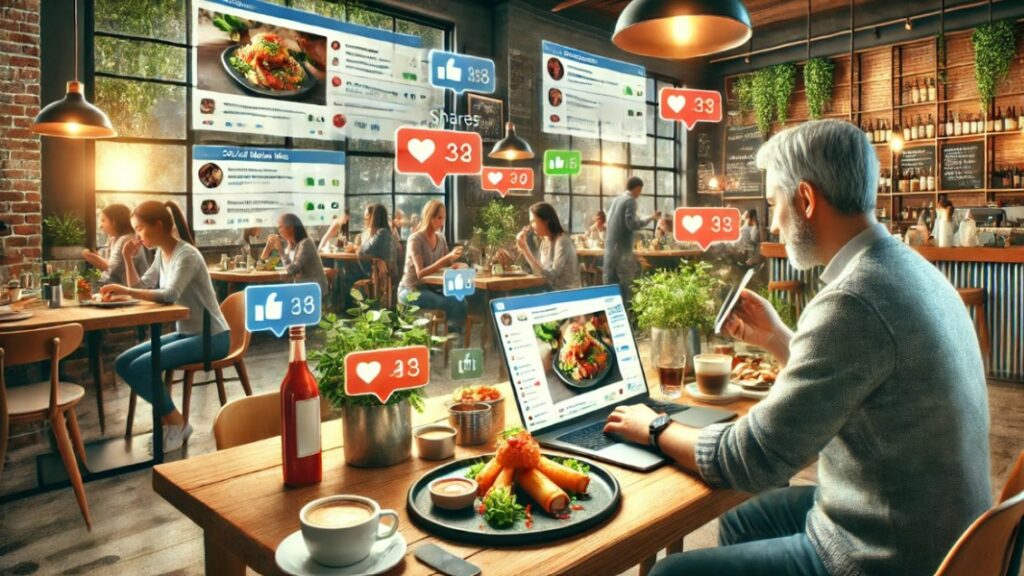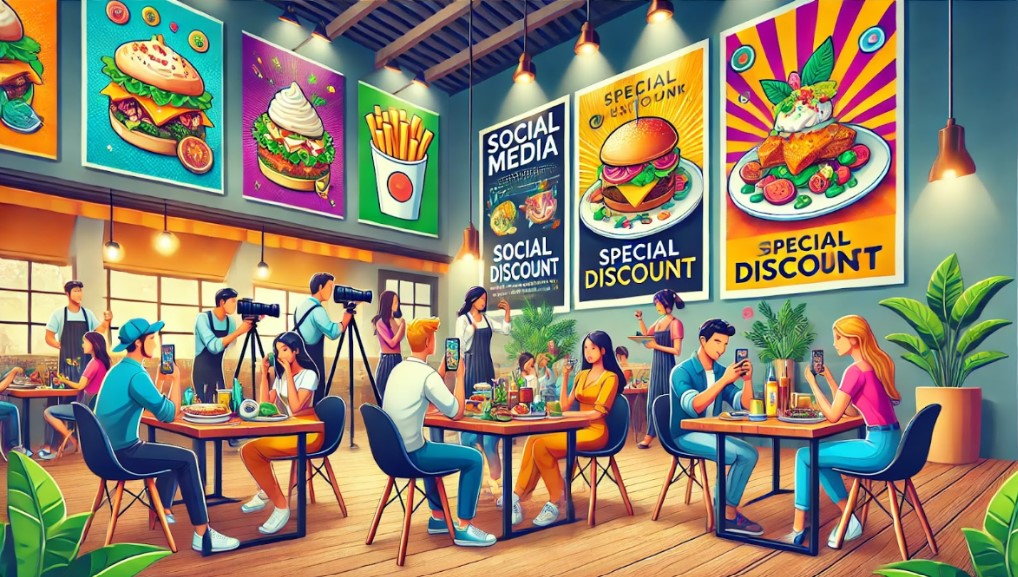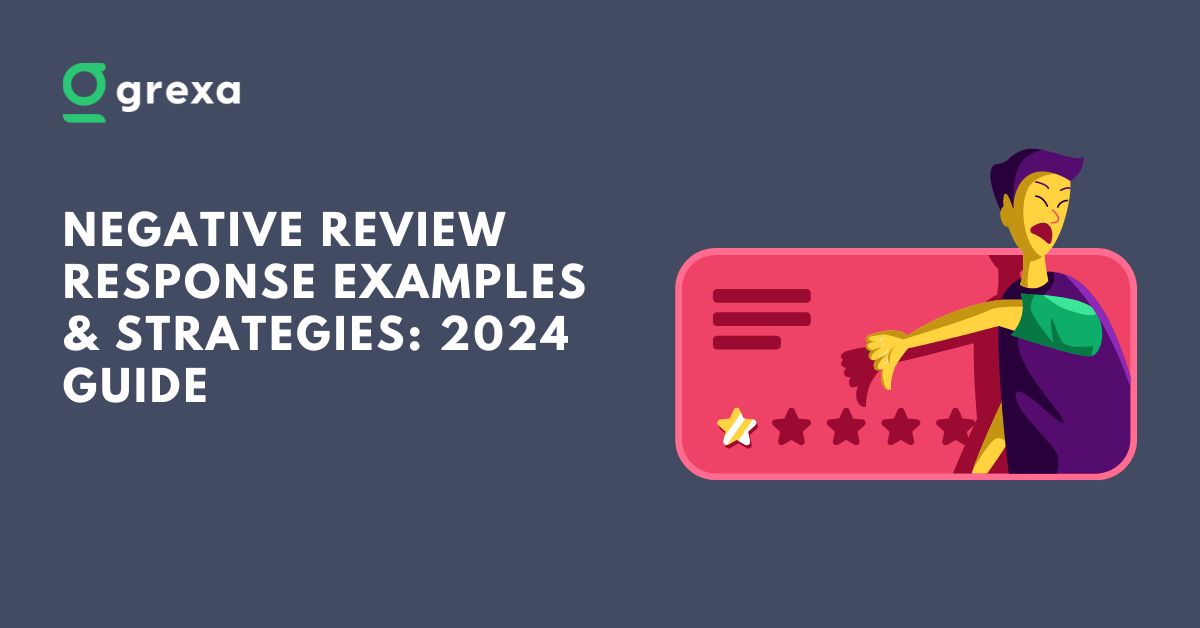Table of Contents
Understanding the Power of Restaurant Marketing Campaigns
In today’s competitive dining landscape, the best restaurant marketing campaigns can make or break your business. But what makes a campaign truly effective?
Innovative marketing is crucial for restaurant success. It’s not just about great food anymore. You need to cut through the noise and grab attention. The best marketing campaigns for restaurants do just that.
Effective campaigns impact both customer acquisition and retention. They don’t just bring in new diners; they keep them coming back for more. Let’s dive into what makes these campaigns tick.
Top 10 Best Email Marketing Campaigns for Restaurants
Email marketing remains a powerhouse for restaurants. When done right, it’s personal, direct, and highly effective. Here are the top 10 best email marketing campaigns that have set the bar high:
- Birthday Specials: Personalized offers on customers’ birthdays
- Menu Updates: Showcasing new dishes with mouth-watering images
- Exclusive Event Invitations: Making subscribers feel like VIPs
- Seasonal Promotions: Capitalizing on holidays and local events
- Behind-the-Scenes Content: Sharing kitchen stories and chef profiles
- Recipe Sharing: Giving subscribers a taste of your expertise
- Loyalty Program Updates: Keeping members engaged and active
- Customer Feedback Requests: Showing you value their opinion. Encourage customers to leave reviews by following our guide on how to ask for Google reviews.
- Local Community News: Positioning your restaurant as a local hub
- Cooking Tips and Tricks: Providing value beyond just promotions
Crafting irresistible subject lines is key. Studies have shown personalized subject lines can increase open rates by 50%. Use the recipient’s name, location, or past dining preferences to grab attention.
Personalization goes beyond just names. Segment your list based on dining habits, preferences, and past interactions. Tailor your content to each group for maximum impact.
Measuring success is crucial. Track open rates, click-through rates, and conversion rates. Use A/B testing to refine your approach continuously. The best email marketing campaigns are those that evolve based on data.
Social Media Mastery: Best Restaurant Advertising Campaigns on Popular Platforms

Social media is a goldmine for restaurant advertising campaigns. Each platform offers unique opportunities to showcase your brand. Let’s explore the best approaches for each:
Instagram: Visual Storytelling for Food Lovers
Instagram is all about visuals. The best restaurant marketing campaigns on this platform focus on:
- High-quality food photography
- Behind-the-scenes stories
- User-generated content featuring your dishes
- Instagram-exclusive promotions
Chipotle’s #GuacDance challenge on TikTok is a prime example of viral marketing done right. It garnered over 250,000 video submissions and 430 million views in just six days.
TikTok: Viral Challenges and Behind-the-Scenes Content
TikTok’s rapid growth makes it a hotspot for restaurant marketing. Successful campaigns here often include:
- Fun, easy-to-replicate challenges
- Quick recipe videos
- Humorous staff interactions
- Trendy food hacks
Facebook: Community Building and Event Promotion
Facebook excels at fostering community and promoting events. The best campaigns here focus on:
- Local event promotions
- Customer spotlights
- Interactive polls and questions
- Live Q&A sessions with chefs or owners
Remember, consistency is key across all platforms. Your brand voice should be recognizable whether someone’s scrolling through Instagram, TikTok, or Facebook. For more ideas on promoting your restaurant online, check out our restaurant marketing 101 guide.
Celebrity Partnerships: Leveraging Star Power in Restaurant Ad Campaigns
Celebrity partnerships can skyrocket a restaurant’s visibility. But it’s not just about picking any famous face. The best restaurant marketing campaigns align celebrities with their brand values.
Case Study: McDonald’s Travis Scott Meal
McDonald’s partnership with rapper Travis Scott was a massive success. The campaign included:
- A custom meal named after the artist
- Limited-edition merchandise
- Social media buzz generated by Scott’s fans
The result? McDonald’s saw a 4.6% increase in U.S. sales in Q3 2020, despite the pandemic.
When choosing a celebrity for your campaign, consider:
- Alignment with your brand values
- Appeal to your target demographic
- Authenticity of the partnership
- Potential for creative, engaging content
Measuring ROI on celebrity-endorsed campaigns is crucial. Track metrics like:
- Increase in sales during the campaign period
- Social media engagement and follower growth
- Brand sentiment changes
- Long-term customer retention
Limited-Time Offers: Creating Urgency in Restaurant Marketing

Limited-time offers (LTOs) are powerful tools in the best restaurant marketing campaigns. They create a sense of urgency and encourage immediate action.
Seasonal menu promotions are a classic example. Pair your promotions with a catchy restaurant slogan to boost brand recognition. They capitalize on:
- Seasonal ingredients at their peak
- Holiday themes and traditions
- Local events and festivals
Flash sales and exclusive deals can drive significant traffic. Strategies for success include:
- Countdown timers on your website or app
- Email notifications to loyal customers
- Social media teasers building up to the sale
Leveraging FOMO (Fear of Missing Out) in your marketing messages can be incredibly effective. Use phrases like:
- “For a limited time only”
- “While supplies last”
- “First 100 customers only”
Remember, the key to successful LTOs is balance. Offer them frequently enough to create excitement, but not so often that they lose their appeal.
FAQ: Common Questions About Restaurant Marketing Campaigns
How often should I run marketing campaigns for my restaurant?
Aim for a mix of ongoing campaigns (like social media content) and periodic special promotions (4-6 times a year).
What’s the most cost-effective marketing channel for restaurants?
Social media and email marketing often provide the best ROI, especially for smaller budgets.
How can I measure the success of my restaurant marketing campaigns?
Track metrics like increased foot traffic, sales uplift, social media engagement, and customer feedback.
Loyalty Programs: Turning First-Time Diners into Regular Customers

Loyalty programs are the secret sauce in many of the best restaurant marketing campaigns. They transform casual diners into brand advocates. Learn how to manage Google reviews to complement your loyalty program efforts.
Digital vs. Traditional Loyalty Programs: Pros and Cons
Digital Programs:
- Pros: Easy to track, personalize, and update
- Cons: May exclude less tech-savvy customers
Traditional Programs:
- Pros: Tangible, familiar to all age groups
- Cons: More difficult to manage and analyze
Gamification in restaurant loyalty is a growing trend. It increases engagement by adding fun elements like:
- Points systems with rewards tiers
- Challenges or “quests” for extra points
- Leaderboards for competitive customers
Analyzing loyalty program data is crucial for targeted marketing. Use insights to:
- Personalize offers based on dining habits
- Identify and reward your top customers
- Tailor menu items to popular preferences
Grexa AI can help you set up and manage an effective loyalty program tailored to your restaurant’s needs.
Content Marketing Strategies for Restaurants
Content marketing is a powerful tool in the best restaurant marketing campaigns. It builds brand authority and engages customers beyond the dining room.
Blog posts that attract food enthusiasts might include:
- Recipe sharing (without giving away all your secrets)
- Local ingredient spotlights
- Chef interviews and stories
- Food and wine pairing guides
Video content is increasingly popular. Ideas include:
- Quick recipe tutorials
- Behind-the-scenes kitchen tours
- Chef tips and tricks
- Customer testimonials
Podcasts are an emerging trend in restaurant marketing. Topics could cover:
- Local food scene discussions
- Interviews with farmers and suppliers
- Food history and culture deep dives
- Restaurant industry insights
Remember, the goal of content marketing is to provide value, not just promote your restaurant. Build trust and authority, and the customers will follow.
Local SEO: Dominating Your Neighborhood’s Search Results
Local SEO is crucial for restaurants. It ensures you show up when nearby diners search for places to eat.
Google My Business optimization is key. Ensure your listing:
- Has accurate, up-to-date information
- Includes high-quality photos of your food and space
- Features your menu and popular dishes
Managing and leveraging customer reviews is vital. Studies show that 85% of consumers trust online reviews as much as personal recommendations.
Local link building strategies for restaurants might include:
- Partnering with local food bloggers
- Sponsoring community events
- Collaborating with nearby businesses
Remember, local SEO is an ongoing process. Regularly update your information and engage with your online community for best results.
Influencer Marketing: Partnering with Food Bloggers and Critics
Influencer marketing can be a game-changer in restaurant advertising campaigns. But success lies in choosing the right partners.
When identifying influencers for your restaurant, consider:
- Their audience demographics
- Engagement rates (more important than follower count)
- Content quality and style
- Previous restaurant collaborations
Crafting authentic influencer partnerships is key. Ideas include:
- Inviting influencers for a special tasting menu
- Collaborating on a limited-time menu item
- Hosting an influencer-led cooking class
Measuring the impact of influencer collaborations involves tracking:
- Engagement on influencer posts
- Increase in your social media followers
- Mentions of the influencer’s recommended dishes
- Use of influencer-specific promo codes
Remember, the best influencer partnerships feel natural and align with your brand values.
User-Generated Content: Turning Customers into Brand Ambassadors

User-generated content (UGC) is a powerful tool in the best restaurant marketing campaigns. It provides authentic, relatable content that resonates with potential customers.
Creating Instagram-worthy plating and decor ideas encourages sharing. Consider:
- Unique presentation styles for signature dishes
- Eye-catching interior design elements
- Interactive food experiences (e.g., tableside preparations)
Hashtag campaigns can drive UGC creation. Successful examples include:
- Domino’s #DominosKnowTheDough campaign
- Starbucks’ #RedCupContest
Featuring customer content in your marketing materials:
- Builds trust with potential customers
- Makes existing customers feel valued
- Provides a constant stream of fresh content
Remember to always get permission before using customer content in your campaigns.
Cause Marketing: Aligning Your Restaurant with Social Responsibility
Cause marketing can set your restaurant apart and attract socially conscious diners. The key is choosing causes that resonate with your brand and customers.
Successful cause marketing campaigns often:
- Partner with local charities or initiatives
- Align with food-related causes (e.g., hunger relief, sustainable farming)
- Involve customers in the giving process
Implementing donation programs that customers love might include:
- “Round up for charity” options on bills
- Donating a percentage of sales from specific menu items
- Hosting charity events or fundraising dinners
Communicating your impact effectively is crucial. Share:
- Regular updates on funds raised
- Stories of individuals or communities helped
- Opportunities for customers to get involved beyond dining
Remember, authenticity is key in cause marketing. Choose initiatives you genuinely care about for the best results.
Mobile Apps and Online Ordering: Streamlining the Customer Experience
In today’s digital age, mobile apps and online ordering are essential components of the best restaurant marketing campaigns. They offer convenience and foster customer loyalty.
Features that make restaurant apps sticky include:
- Easy-to-navigate menus
- Quick reorder options for favorite items
- Real-time order tracking
- In-app exclusive offers
Integrating loyalty programs with mobile ordering can significantly boost engagement. Consider:
- Points for every order placed through the app
- Special rewards for frequent app users
- Birthday or anniversary perks automatically applied to orders
Push notification strategies that drive orders might include:
- Limited-time offers during slow hours
- Reminders about abandoned cart items
- Notifications about new menu items or seasonal specials
Remember, the key to a successful app is continuous improvement based on user feedback and behavior data.
Innovative Offline Advertising for Restaurants
While digital marketing is crucial, innovative offline advertising can still play a significant role in the best restaurant marketing campaigns. It helps create a tangible, memorable brand experience.
Guerrilla marketing tactics for local buzz might include:
- Chalk art menus on nearby sidewalks
- Food trucks or pop-up events in unexpected locations
- Interactive installations that reflect your restaurant’s theme
Creative billboard and outdoor advertising ideas:
- 3D billboards featuring oversized menu items
- Scented bus shelter ads that smell like your signature dishes
- Interactive digital displays allowing passersby to browse your menu
Direct mail campaigns can still be effective when done right. Consider:
- Personalized postcards with exclusive offers
- Menu samples with scratch-and-sniff elements
- Invitations to special events or tastings
Remember, the goal of offline advertising is to create a memorable experience that drives people to your restaurant or online platforms.
Data-Driven Personalization in Restaurant Marketing
Data-driven personalization is the future of restaurant marketing campaigns. It allows you to tailor your messaging and offers to individual preferences.
Leveraging POS data for targeted promotions might include:
- Offering discounts on items similar to past purchases
- Sending reminders about favorite dishes that haven’t been ordered in a while
- Creating personalized menu suggestions based on dietary preferences
AI and machine learning in menu recommendations can enhance the dining experience. Consider:
- AI-powered chatbots suggesting dishes based on customer preferences
- Dynamic digital menus that change based on time of day or weather
- Predictive analytics to forecast popular dishes and optimize inventory
Behavioral targeting in digital advertising allows for hyper-personalized campaigns. This might include:
- Retargeting ads featuring dishes a customer viewed but didn’t order
- Location-based ads triggered when a customer is near your restaurant
- Time-sensitive promotions based on a customer’s usual dining times
Remember, while personalization can be powerful, it’s important to respect customer privacy and adhere to data protection regulations.
Conclusion: Crafting Your Restaurant’s Marketing Success Story
The best restaurant marketing campaigns are those that authentically engage customers across multiple touchpoints. They combine creativity with data-driven insights to create memorable experiences. For more inspiration, explore our collection of restaurant events to boost engagement and loyalty.
Key takeaways from the best marketing campaigns for restaurants:
- Leverage a mix of digital and traditional marketing channels
- Prioritize authenticity and value in your messaging
- Use data to personalize experiences and offers
- Engage customers beyond the dining room through content and causes
- Continuously test, measure, and refine your strategies
Action steps for implementing winning strategies:
- Audit your current marketing efforts
- Identify gaps and opportunities based on this guide
- Prioritize campaigns that align with your brand and customer preferences
- Set clear goals and KPIs for each campaign
- Implement, measure, and iterate
Future trends in restaurant marketing to watch:
- Increased use of AR and VR in dining experiences
- Greater emphasis on sustainability and ethical sourcing
- More personalized, AI-driven marketing communications
- Integration of voice search optimization for local SEO
Remember, the most successful restaurant marketing campaigns are those that evolve with customer preferences and technological advancements. Stay curious, stay creative, and most importantly, stay customer-focused.
Ready to take your restaurant marketing to the next level? Explore Grexa’s restaurant marketing solutions for tools and insights to help you implement these strategies effectively.



